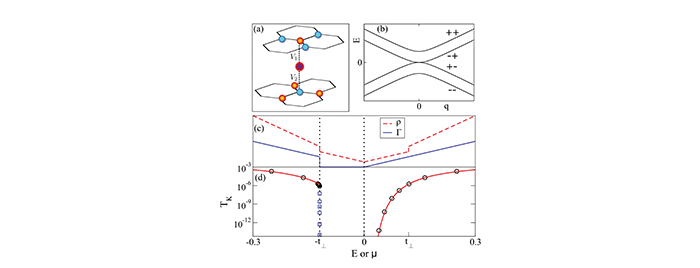Several years ago, a Physics World article posed the question, “Why would anyone still want to study a physical phenomenon that was discovered in the 1930s, explained in the 1960s and has been the subject of numerous reviews since the 1970s?”
Leveraging Ohio Supercomputer Center services, physicist Sergio Ulloa is doing just that — studying a well-known anomaly in condensed matter systems. These systems explain subtle physical aspects of phenomena as they change from one form, or phase, to another, such as melting ice.
According to the article, this anomaly “arises from the interactions between a single magnetic atom, such as cobalt, and the many electrons in an otherwise non-magnetic metal.” Over the years, scientists have found this very complex scenario, known as the Kondo effect, difficult to represent mathematically.
In 1933, Dutch physicist Wander Johannes de Haas and co-authors reported an unexpected rise in the resistivity of some gold samples at low temperatures. About 30 years later, in 1964, Japanese physicist Jun Kondo identified the cause of the phenomenon that was to bear his name. In 1974, Nobel Prize Winner Kenneth Wilson was able to first solve the Kondo model with a technique known as the numerical renormalization group, which Ulloa’s group now employs.
“The appearance of different experimental systems and characterization techniques have resulted in a dramatic revival of the field in the last ten years,” explained Ulloa, professor of physics and astronomy at Ohio University. “Our theoretical and computational efforts continue studies of more challenging systems of increasing relevance to experiments. We explore new issues that arise as one is able to better control where and how the Kondo effect is produced.”
Ulloa’s research group is now studying the Kondo effect on systems involving quantum dots, tiny semiconducting “droplets” that can hold from one to a few electrons in a controllable manner and act then as man-made atoms. These and other quantum dots possess unique electronic properties and are employed in transistors, solar cells, LEDs and diode lasers. Metallic dots are also being studied for use in medical imaging and treatment.
Ulloa and his colleagues also are investigating how the Kondo effect impacts atom-electron interactions in other materials, such as molybdenum disulfide. These materials possess crystal symmetries that result in energy “valleys” that can be used to channel the flow of charge in a particular way. Trapping electrons within one valley or another might be used as a switch for “valleytronic” devices.
Project Lead: Sergio E. Ulloa, Ph.D., Ohio University
Research Title: Quantum phase transitions in Kondo systems
Funding Source: National Science Foundation
Website: ohio.edu/people/ulloa/News/News.html

